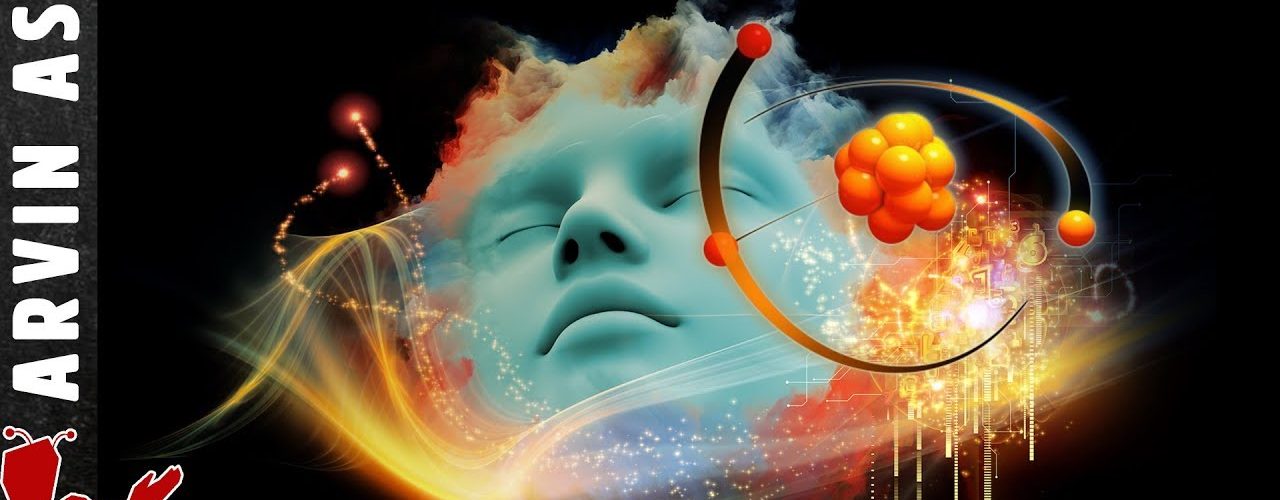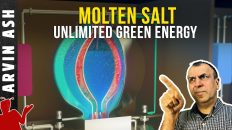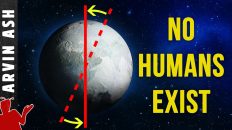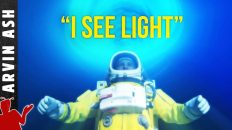Does the future affect the past? Shocking answer from delayed choice quantum eraser
You know intuitively that your actions today will influence your circumstances tomorrow. But imagine turning this scenario backward, that your actions in the future may actually be influencing your circumstances today.
Could it be possible that that the future can influence the present?
An enhanced version of the famous double slit experiment, called the delayed choice quantum eraser implies exactly that mind blowing scenario – that future events can influence past results.
What exactly is a delayed choice quantum eraser, and how can it possibly show that the future is affecting the past?
In 1978, a physicist by the name of John Archibald Wheeler proposed a thought experiment, called delayed choice. Wheeler’s idea was to imagine light from a distant quasar which is billions of light years from earth, being gravitationally lensed by a closer galaxy. As a result, light from a single quasar would appear as coming from two slightly different locations, because of the lensing effect of gravity from a galaxy between earth and the quasar.
Wheeler then noted that this light could be observed on earth in two different ways. The first would be to have a detector aimed at each lensed image. Since the precise source of this light was known, it would be measured as particles of light when viewed. But if a light interferometer was placed at the junction of the two light sources, the combined light from these two images would be measured as a wave because it’s precise source would not be known. That’s the way quantum mechanics should work.
This is called a delayed choice because the observer’s choice of selecting how to measure the particle is being done billions of years from the time that the particle left the quasar. So presumably the light would have to be committed to either being a particle or wave, billions of years before the measurement is actually made here on earth.
This quasar experiment isn’t practical, but modern equipment allows us to perform a similar experiment in the lab, where the decision to measure a particle or wave is done at random after the quantum system is “committed.” And indeed his thought experiment is confirmed – that even if measured at random, when the path information is known, the light is a particle. When path information is erased by using an interferometer, the light is a wave.
But how could this be?…the light began its journey billions of years ago, long before we decided on which experiment to perform. It would seem as if the quasar light “knew” whether it would be seen as a particle or wave billions of years before the experiment was even devised on earth.
Does this prove that somehow the particle’s measurement of its current state has influenced its state in the past?
This interpretation is where things get fuzzy. The most conventional way to interpret quantum theory is to presume quanta have a potential wave function, meaning it is really not a particle or wave, it is just a wave of potential. And this potential collapses into a definite state when observed.
In this view the act of measurement gives reality to the quantum particle.
So in the delayed-choice experiment, this means the quantum doesn’t become “real” until you measure it.
So this experiment does not prove that the present has influenced the past because the light could have been a wave and particle at the same time, and only become real when it was measured.
However, another more recent experiment set up used a more complicated method to determine this idea of the future influencing a past.
It introduced something called the quantum eraser to the delayed choice. So it is called the Delayed Choice Quantum Eraser designed by Kim, Kulik, Shih and Scully in 1999.
It is a complicated construction that introduced entangled pairs of photons to Wheeler’s delayed choice experiment.
I am going to show you a much simpler set up that will illustrate this concept in easier-to-understand terms.
Let’s take the standard double-slit set up for firing single photons, but instead of letting the photons go to a screen after it goes through the double slit, we will split the photon into two entangled photos using a barium borate crystal. Since these photons are entangled, we can take measurements on one photon without touching the other.
In addition we will place a lens, such that regardless of whether the photon exits from the top slit or bottom slit, the two beams will always combine at detector 1 such that the we cannot know which slit the photon came from. So this lens acts as the Eraser because it erases the which path information of the photon.
Next, we will take several measurements on the entangled pair of the photons coming out of each slit. We place a beam splitter such that a photon has a 50% chance of being diverted downwards, and 50% chance of going through the splitter. We do this for photons coming from the top slit, and the bottom slit separately.
When the beam is diverted downwards, the two beams from the top and bottom slits combine such that the which path information cannot be known.
In other words, if the detector 4 detects a photon, it will not have the which way information. The combining of the two beams is the eraser – in other words, the which path information is erased at detector 4.
But if the particle exits the top slit and is detected at detector 2, the which path information is known, because detector 2 can only detect photons from the top slit.
Similarly if the particle exits the bottom slit, and is detected at detector 3, the which path information is also known because detector 3 can only detect photons from the bottom slit.
The results of this experiment are pretty amazing – because Here’s what happens.
When detector 2 senses a photon, detector 1 which senses its entangled twin, shows that it’s a particle, bot a wave – because we see a double line particle pattern.
The same thing happens when detector 3 senses a photon – detector 1 shows its entangled twin as a particle.
However, when detector 4 senses a photon, detector 1 senses a wave pattern, not a double line particle pattern.
So far nothing is surprising here right?
This tells us that when the which way information is known, that is, when the detector can ascertain which slit the photon came from, it always presents as a particle.
But when the detector cannot ascertain which slit the photon came from, that is, when the which way information is erased, then the photon acts like a wave.
But I’m being a little cheeky here because I left out a tiny but crucial detail that makes these results shocking.
And that detail is that the path to detector 1 is much shorter than the paths to detectors 2, 3, and 4.
So the photon is always detected at detector 1 BEFORE it is detected on any other detectors.
So this is the delayed choice aspect of this experiment.
An interference pattern forms on detector 1 even if the which-path information pertinent to the photons that form it are only erased until much later in time at detector 4.
And a double line pattern forms at detector 1 even before its which path information is ascertained at detectors 2 or 3.
This shows us that somehow the photon at detector 1 knows ahead of time which detector its entangled pair will end up at in the future.
So it seems to show that the future state of the photon at detectors 2, 3 and 4, affect the past state of its entangled pair at detector 1.
And these results are absolutely consistent, and have been demonstrated in multiple experiments.
How is this possible?
To be perfectly honest, I don’t have an answer. No one has a good answer. If you have an answer, let me know – because there is a Nobel prize waiting for you.
But not knowing the answer is not going to stop our speculation.
What is absolutely clear in this experiment is that the measurement of a particle in the present, can influence the properties of that particle in the past. In other words, a decision made in the present can influence something in the past.
The effect seems to precede the cause.
But maybe our sense of time flowing in one direction is not something that quantum particles are constrained by. The entangled particles seem to be immune to the direction of time, or are somehow connected in time even when not connected in space.
Maybe our causal experience is just that – an experience, but not the true nature of reality.
cause and effect seem to be temporally separated in the quantum world.
But let’s extrapolate these results to their most absurd extremes. There can be no communication between the future to the past. This would violate all kinds of laws in physics – like conservation of information, energy, etc.
But Does backward causation mean that a future cause is changing something in the past? No. What came about in the past already happened, when the past was the present.
The past cannot be changed. The past is fixed.
or Maybe the past can be changed.







